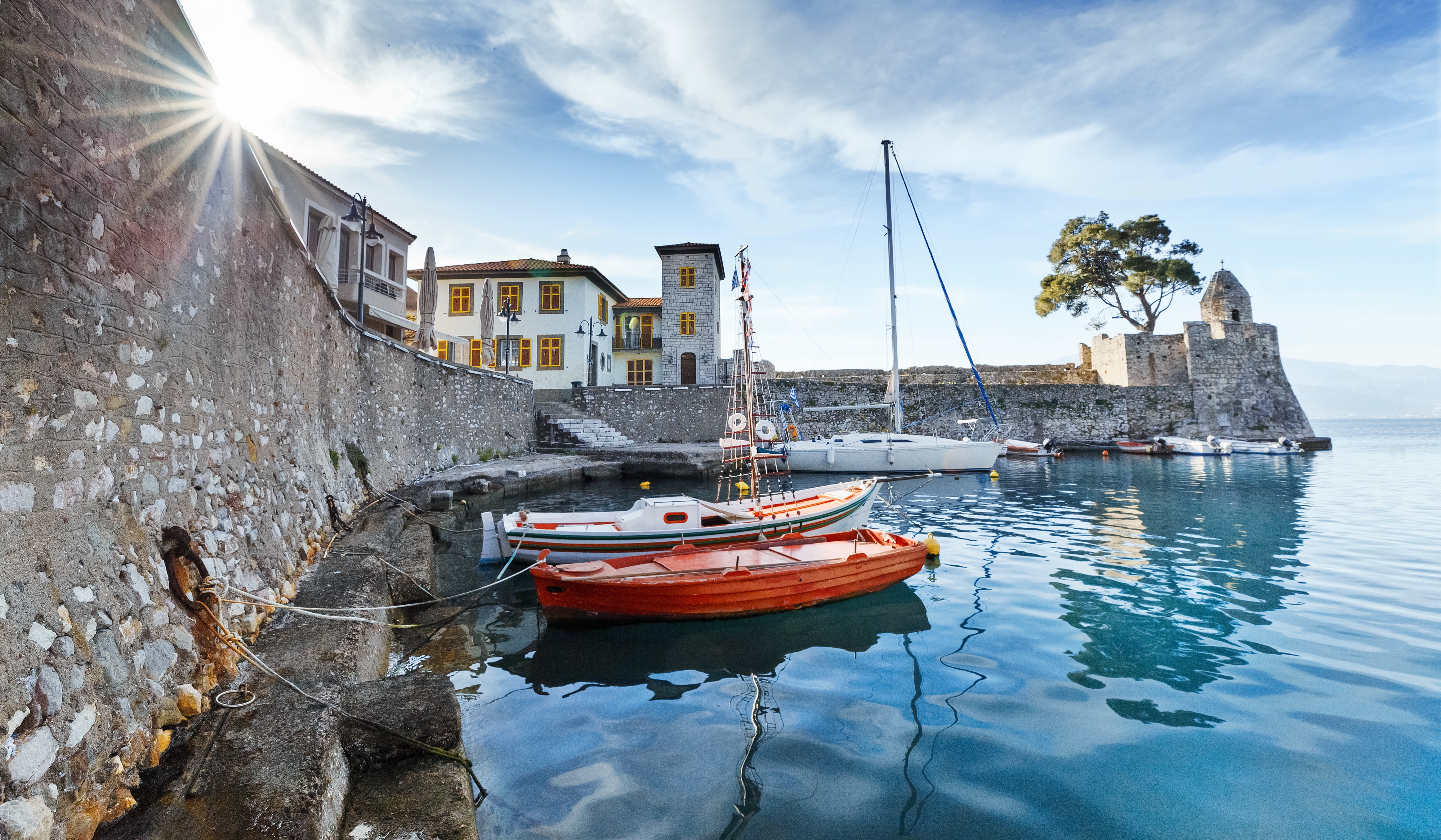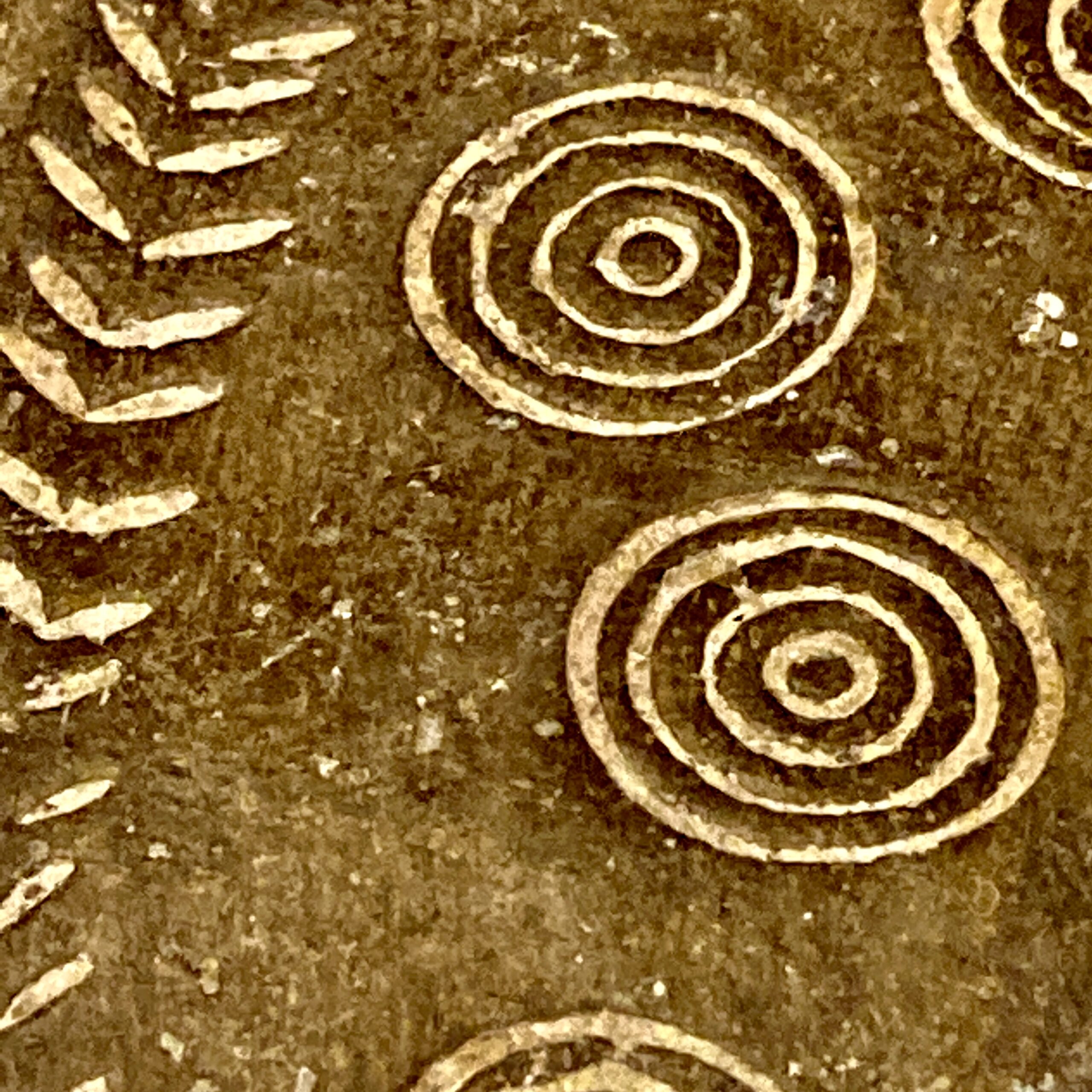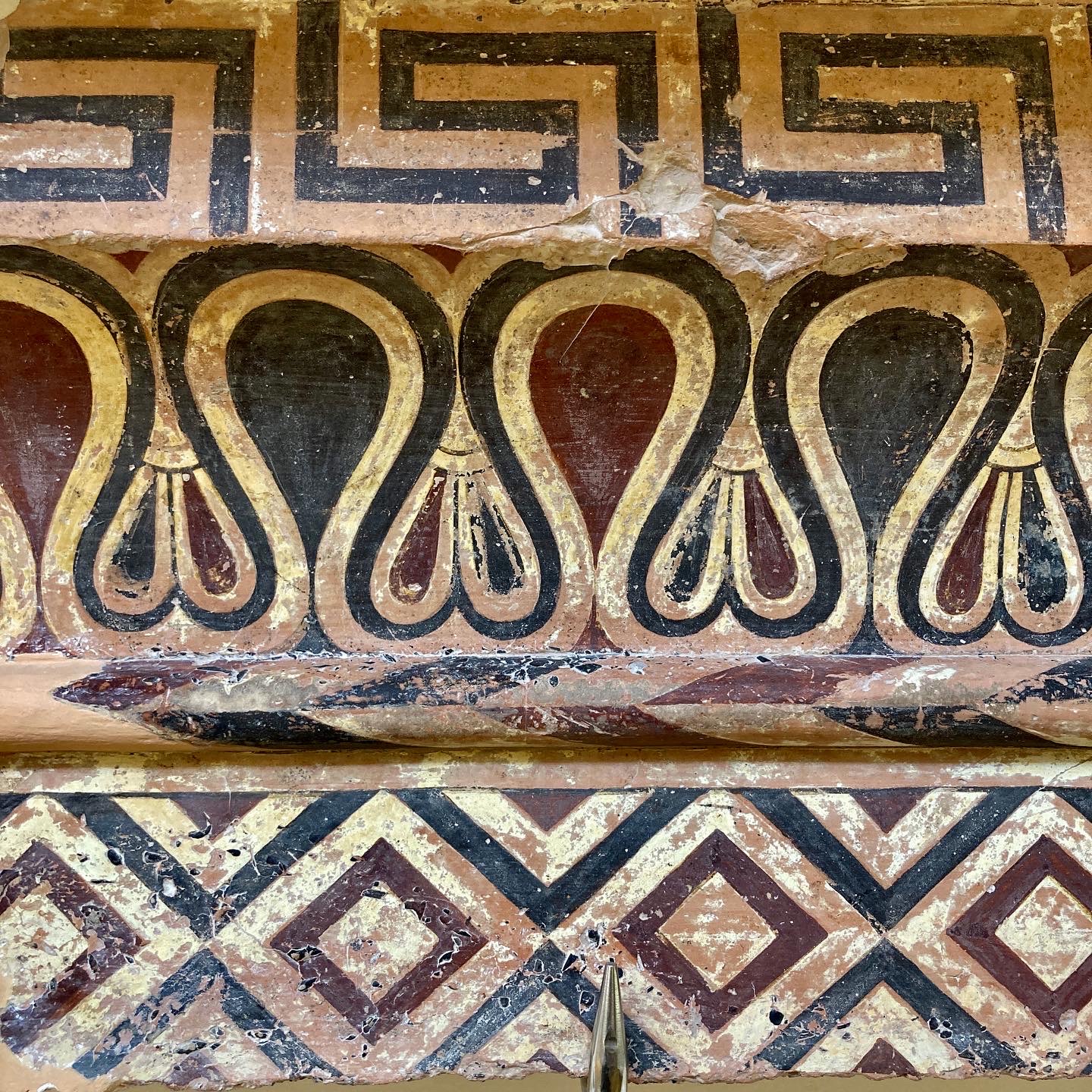Stories from Greece are still swirling around in my head. Stories we heard from our fabulous guides. Stories that bring bronze, stone, ivory, and gold to life. Perhaps most incredible is that the objects, which give rise to these stories and give a view into ancient history, have survived thousands of years of looting and natural disasters such as earthquakes and fires.
Photo credits go to Gail Fox for the museum photos on this blog page.
Don’t forget to view the slideshow (link is also below).
Imagine unearthing this head found in Delphi! It is a burnt ivory head with copper eyelashes and a pure gold headdress. A total of three similar life-sized heads of statues where found buried in Delphi. Archeologists say that they portrayed the god Apollo, his sister Artemis, and their mother Leto. The eyes are eerily realistic.

The Charioteer of the Delphi Museum dates to 478 BC. It is perhaps the most famous of all statues in Greece. The Charioteer of Delphi is displayed in his own room apart from other museum ancient works of art found at the Delphi archaeological site. And it is breathtaking!
The statue is made of bronze. Miraculously, the statue was not melted to be used to make something else. Nor did it corrode. It was perfectly preserved because it got buried in a rock fall in Delphi in 373 BC.

“The statue was commissioned by a Sicilian tyrant named Polyzalos to commemorate his chariot victory in the Pythian Games in 478 BC. It is a life-size statue belonging to a larger group, which represented a chariot drawn by four horses.”
Polyzalos lived in Sicily at a time when Sicily was a Greek Colony. We know so much about Polyzalos and this statue because there is an inscription at the base of the statue with his name, the specific commemoration, the artist, and the date the gift was made to Delphi!
The attention to detail is unbelievable! The Charioteer is a boy as you can see from his fine face. He is just starting to grow facial hair. He has a serene look on his face because he has already won the race! In fact, his head has been decorated to celebrate his victory. The art work is so detailed that you see the veins of his arms.
In the photo below, you can see how his hair is moistened with sweat and you can even see sweat dripping down the back of his neck. 
Below: These two well preserved statues were discovered buried side by side in an ancient necropolis. They were once upon a time set upon pedestals to commemorate a grave site. The statues date back from 550-530 BC. Who is this woman so finely dressed, holding her robe, looking at her nearby lover?
In the photo below, both the woman and the man are positioned to look out at the audience. But in real life, they were found lying in a pit next to each other.
The young woman wears her finest clothing, her bridal gown. She is in love and dreaming of building a life with the love of her life. Her wedding will be a grand celebration because she is wealthy and her family will give her the best of all they can offer. But sadly, she never gets married because she dies a premature death and these statues bring to life youth at its finest, so full of promise, reaching out for it all. It seems that Death is unable to snuff out their enduring love.

MERENDA KOUROS 540-530 BC & PHRASIKLEIA KORE 550-540 BC
Together forever: in 1972, a kore (“maiden”) and a kouros (“naked youth”) were discovered buried side by side in a pit, in an ancient necropolis at Merenda in southeastern Attica. Their story is one of family tragedy, foreign invasion and inspired archaeological detective work. Laid to rest in the late 6th or early 5th c. BC, the pair were long forgotten. In 1730, however, Michel Fourmont, a French Catholic priest and antiquarian, noted an inscribed stone that had been reused as a column capital in Merenda’s Church of the Panaghia. In fact, it was an ancient statue base, which referred to “Phrasikleia,” a young woman who had died before having the chance to wed.
Removed to Athens in 1968, the stone remained in obscurity until the Merenda statues were later unearthed near the chapel. Archaeologist Efthymios Mastrokostas recalled the inscribed base and deduced the kore – holding a lotus bud, symbolic of life and death– might be the virgin Phrasikleia. Confirming his conclusion was a large lead ring found in the grave, which had originally affixed the kore to her pedestal. It fit the base perfectly.
I will offer another Yoga + Culture in Greece in September 2020. Exact date TBA.
Below is a video slideshow from the trip. I don’t think the embed code works so I will also include the link to a 3.5 minute video set to the music of Zorba the Greek:







